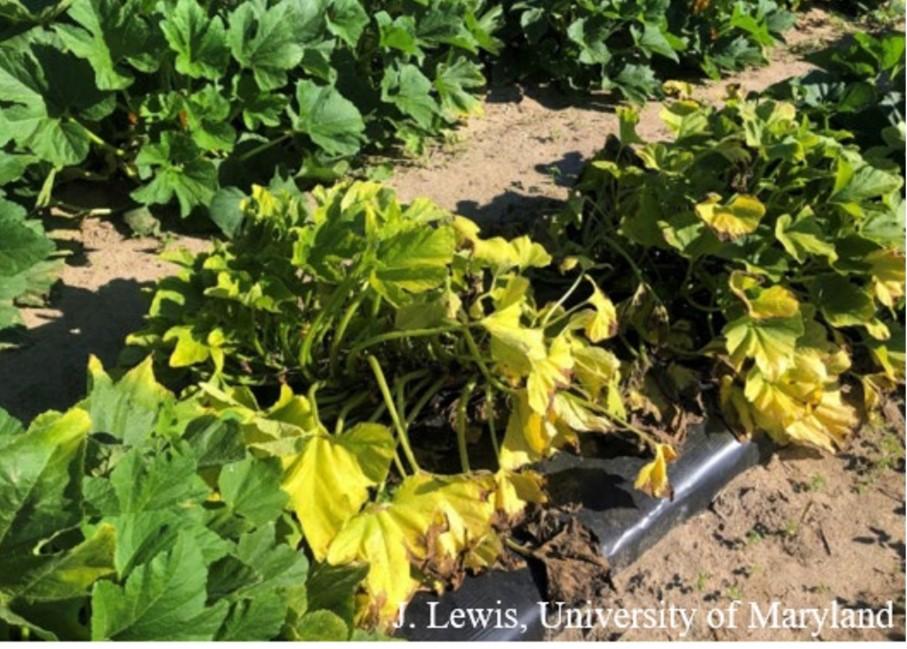Fusarium Crown Rot in Squash
Squash plants that were turning yellow and wilting in the field were found to be infected with the fungus Fusarium solani f. sp. cucurbitae that causes Fusarium crown rot (fig. 1). Fusarium crown rot is generally a problem in summer and winter squash, and some pumpkin cultivars, but most cucurbits are susceptible.

Early symptoms of Fusarium crown rot consist of stunting and wilting of the plant. The symptoms first observed at the crown include light colored water-soaked areas that become increasingly darker. A characteristic dark brown necrotic rot of the crown and at times the upper portion of the tap root develops soon after initial symptoms (fig. 2). Infected plants break off easily at or just below the soil line. During typical summer weather (hot and humid), white or pink mycelial growth can be seen on the lower stem. While the roots of a plant can become infected, this pathogen is most often found in the stem just above the soil line or possibly in the fruit of the plant. If fruit are attacked there is a dry (not mushy) rot that develops. These rotted areas can develop a bulls-eye pattern. Other soil borne pathogens can make Fusarium crown rot even worse and the occurrence of anthracnose in these particular plants did not help matters.
Inoculum can come from the soil or the seed. Inoculum from the soil comes from previously infected plants incorporated into the soil. From seed, Fusarium crown rot can be internally or externally seedborne. It is found in the seed coat and between the seed coat and cotyledons, however, it generally does not infect the cotyledons or reduce seed viability of seeds. It remains viable in seeds for 1-2 years. This pathogen is host specific and occurs as races.
Fusarium crown rot occurs sporadically in most areas, and disease severity is determined by the amount of soil moisture and inoculum density. Because the fungus survives in the soil for 2–3 years as chlamydospores a 4-year rotation is often effective for disease control. Planting fungicide-treated seed also helps in reducing the occurrence of the disease that is introduced from infected seed.
Return to Horticulture and Disease Topics
This article appears in the 2024, Vol. 15, Issue 5 and the July 15, 2021, Volume 12, Issue 4 of the Vegetable and Fruit News.
